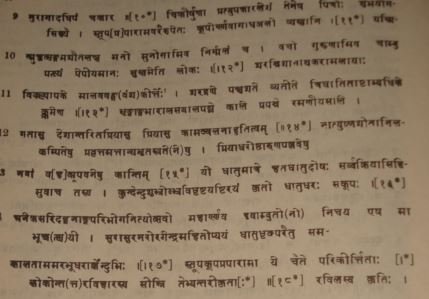|
Contents |
|
Index
|
|
Introduction
|
|
Contents
|
|
List of Plates
|
|
Additions and Corrections
|
|
Images
|
|
Contents |
|
Altekar, A. S
|
Bhattasali, N. K
|
|
Barua, B. M And Chakravarti, Pulin Behari
|
|
Chakravarti, S. N
|
|
Chhabra, B. CH
|
|
Das Gupta
|
|
Desai, P. B
|
|
Gai, G. S
|
|
Garde, M. B
|
|
Ghoshal, R. K
|
|
Gupte, Y. R
|
|
Kedar Nath Sastri
|
|
Khare, G. H
|
|
Krishnamacharlu, C. R
|
|
Konow, Sten
|
|
Lakshminarayan Rao, N
|
|
Majumdar, R. C
|
|
Master, Alfred
|
|
Mirashi, V. V
|
|
Mirashi, V. V., And Gupte, Y. R
|
|
Narasimhaswami, H. K
|
|
Nilakanta Sastri And Venkataramayya, M
|
|
Panchamukhi, R. S
|
|
Pandeya, L. P
|
|
Raghavan, V
|
|
Ramadas, G
|
|
Sircar, Dines Chandra
|
|
Somasekhara Sarma
|
|
Subrahmanya Aiyar
|
|
Vats, Madho Sarup
|
|
Venkataramayya, M
|
|
Venkatasubba Ayyar
|
|
Vaidyanathan, K. S
|
|
Vogel, J. Ph
|
|
Index.- By M. Venkataramayya
|
|
Other
South-Indian Inscriptions
|
|
Volume
1
|
Volume
2
|
|
Volume
3
|
Vol.
4 - 8
|
|
Volume 9
|
Volume 10
|
|
Volume 11
|
Volume 12
|
|
Volume 13
|
Volume
14
|
|
Volume 15
|
Volume 16
|
|
Volume 17
|
Volume 18
|
|
Volume
19
|
Volume
20
|
|
Volume 22
Part 1
|
Volume
22
Part 2
|
|
Volume
23
|
Volume
24 |
|
Volume
26
|
Volume 27 |
|
Tiruvarur
|
Darasuram
|
|
Konerirajapuram
|
Tanjavur |
|
Annual Reports 1935-1944
|
Annual Reports 1945- 1947
|
|
Corpus Inscriptionum Indicarum Volume 2, Part 2
|
Corpus Inscriptionum Indicarum Volume 7, Part 3
|
|
Kalachuri-Chedi Era Part 1
|
Kalachuri-Chedi Era Part 2
|
|
Epigraphica Indica
|
Epigraphia Indica Volume 3
|
|
Epigraphia
Indica Volume 4
|
Epigraphia Indica Volume 6
|
|
Epigraphia Indica Volume 7
|
Epigraphia Indica Volume 8
|
|
Epigraphia Indica Volume 27
|
Epigraphia Indica Volume 29
|
|
Epigraphia Indica Volume 30
|
Epigraphia Indica Volume 31
|
|
Epigraphia Indica Volume 32
|
Paramaras Volume 7, Part 2
|
|
Śilāhāras Volume 6, Part 2
|
Vākāṭakas Volume 5
|
|
Early Gupta Inscriptions
|
|
Archaeological
Links
|
|
Archaeological-Survey
of India
|
|
Pudukkottai
|
|
|
EPIGRAPHIA INDICA

TRANSLATION
Success attained !
(V. 1.) Obeisance to Sugata who, wishing to save the world (which is) plunged in the uninterrupted series of births and deaths closely associated with misery in various forms, enjoined a
religion consisting of three steps[2] (stages), and who attained peace !
(V. 2.) Like a moon in the sky (in the form) of the Gupta dynasty there was a king whose well known appellation was śrī Chandragupta, and who fascinated the eyes of the people as does the
newly risen moon.
(V. 3.) Who on (this) earth having (formerly) snatched away the kingship of (many) kings by
dint of his intellect and valour, ensnared the earth with the bonds of his dynasts, from which
she (i.e., the earth) has not yet been able to release herself.
(V. 4.) The lord of the earth (i.e., king Chandragupta) who was as famous as Gōvinda (Vishṇu)
for the glory of his virtues, produced a son whose exalted name was Gōvindagupta and who resembled the sons of Diti and Aditi (i.e., demons and gods).[3]
____________________________________
[1] Compare  in Fleet’s Gupta Inscriptions, Nos. 18 and 35. in Fleet’s Gupta Inscriptions, Nos. 18 and 35.
[2] The three padas may either refer to the three saranas of the Buddhists, namely Buddha Dhamma and Saṁgha,
ato the three stages sōtāpatti, sakadāgāmi and anāgāmi on the path of Nibbāna or else to the three principles
anityaduḥkha and anaima.
[3]The poet means that Gōvindagupta resembled demons in physical strength and valour, and gods in spiritual
virtueṇ.
|